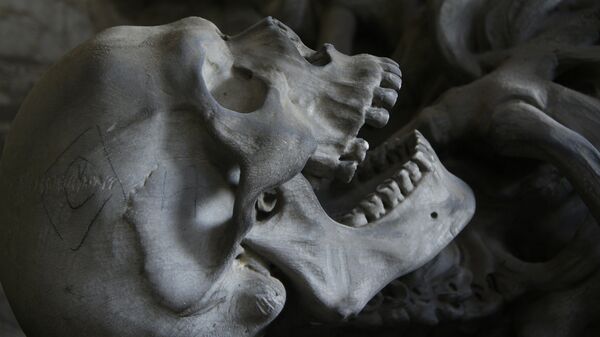The province, which lies in the country's east, has been subject to extensive excavation by archaeologists since 2016. As of June 2016, the ruins of 104 houses, 205 graves and 20 sacrificial pits have been identified.
In the Neolithic period, the area is believed to have been a political, economic and cultural center.
Archeologists find 5,000-year-old “giants” in east China's Shandong, height may reach 1.9 meters https://t.co/7FJJqkvVev pic.twitter.com/0MCazsyXIY
— China Xinhua News (@XHNews) July 3, 2017
In one uncovered tomb, researchers made a shock discovery — a host of notably large, tough skeletons, all grouped together.
The tallest skeleton was 1.9 meters (6ft 3in) in height, the others 1.8 meters or so. In modern terms, particularly in the Western world, such statures are hardly newsworthy — although considering the average height in modern China is a comparatively paltry 1.67 meters (5ft 6in), and average height for a European in the late neolithic era was 1.65 meters, these ancient humans would likely have been the tallest in the room anywhere in the world when they lived.
The average height in the region is 1.753 meters, much higher than the national average.
Famed ancient Chinese philosopher Confucius, indigenous to the province, was reportedly 1.9 meters tall.
Still, revered these ancient giants may have been, but their tallness was not an entirely positive blessing — many of the bones exhibited severe damage.
Elsewhere, discoveries of ruined houses in the area indicate residents lived quite comfortable lives, with separate bedrooms and kitchens — colorful pottery and jade articles have also been found.
The discovery of the ruins helps fill a historical blank in the region, from 5,000 to 4,500 years ago, and show it in a phase of transition — and with the excavation site covering a square kilometer, of which a mere 2,000 square meters have been fully excavated, further study of the site will undoubted offer yet more stunning insights into the origin of culture in east China.




